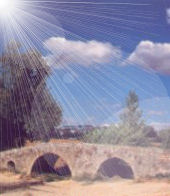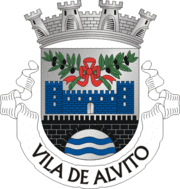Sights:
- Parish church of Nossa Senhora da Assunção: dating back to the early sixteenth century, has certain exterior decorative features that clearly identify it as an example of Mudejar architecture. A modest Renaissance doorway leads to the interior, its walls covered in azulejo panels whose beautiful patterns are a harmonious blend of blue and yellow. In the upper choir, there is a large seventeenth-century altarpiece of carved and gilded wood.
- Chapel of São Sebastião: Mudejar influence is also to be noted in the small fortified chapel of São Sebastião, crowned by an array of chamfered merlons. Inside, painted on the vaulted Gothic ceiling are frescos depicting musical angels.
- Town hall: with its picturesque clock tower, a typical feature of Alentejo architecture.
- Igreja da Misericórdia
- Igreja da Senhora das Candeias: the latter housing a museum of Sacred Art.
- Small chapel of Santa Luzia: on the outskirts of the town, which was originally a Muslim oratory.
Around Alvito:
- Viana do Alentejo
- Manor house of Água de Peixes.
- Shrine of Nossa Senhora de Aires
- Roman ruins of São Cucufate
- Barragem de Odivelas: offers a variety of water sports.
History:
The settlement of this town dates back to the early days of the Portuguese monarchy. The town was granted its first charter by the king D. Dinis in 1327, later confirmed by D. Manuel in 1516. The Alvito Castle, whose construction began in 1494, is undoubtedly one of the most curious buildings of its kind in Portugal. The long Moorish presence in this region left its distinctive marks in the Mudejar architecture clearly visible in various monuments (which laymen can easily recognise through the small cupolas and white-painted conical pinnacles).
Alentejo > Travel guide > Beja > Alvito

Information
This page shows basic information. There is no guarantee for the correctness and completeness of the given facts. The page is regularly updated.




